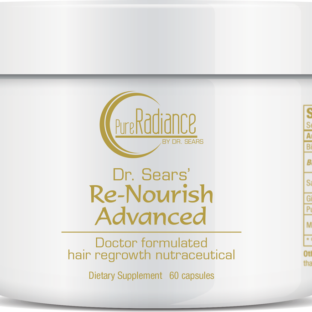
Nature’s most powerful age-fighting fat
Just like your body needs fat to be healthy, so does your skin.
A low-fat diet robs your skin of moisture. And dry skin adds years to your face!
The right kinds of fat in your diet are the good omega-3 fatty acids found in nuts and fatty fish like salmon.
Fatty omega-3 acids are responsible for the health of cell membranes. They’re also emollients — a natural moisturizer that heals and prevents dry skin from the inside out.
The EPA in omega-3s help block the release of the UV-induced enzymes that eat away at our collagen, causing lines and sagging skin.
Because EPA is both an antioxidant and an anti-inflammatory agent, it can protect against sun damage to your skin and even help repair it.1
Healthy fats also help your body absorb antioxidants and fat-soluble vitamins.
This makes for a dewier, more supple complexion.
The omega-3 essential fats called EPA and DHA have also been proven to protect skin from sun damage that leads to premature aging.2
These fats are the building blocks of healthy cell membranes. They help produce the skin’s natural oil barrier. That keeps skin hydrated, plump and looking younger.
Feed Your Face Young Again
- First, feast on fats for younger-looking skin. To get more omega-3s in your meals, try eating three or four servings a week of cold-water fatty fish like wild-caught salmon, sardines, mackerel, tuna and anchovies.
Other sources of good fats include grass-fed beef and dairy, pastured eggs, olive oil, walnuts, avocados and coconut oil. Clinical results from omega-3s like DHA can improve overall skin condition and reduce itching, scaling or redness.3
- Then, use this unique calamari oil. Calamari, or squid, has one of the highest concentrations of DHA of any food. But even if you eat calamari you’re not getting very high concentrations of oil.
That’s why I recommend supplementing with squid oil. But make sure your calamari oil comes from squid that live off the coast of South America in the pure waters of the South Pacific (illex argentinus). After the oil is distilled, it’s more than 65% DHA4 — the highest concentration of DHA I’ve found yet.
- And combine it with krill oil. Squid oil gets even better when it’s combined with krill oil. The DHA in krill oil can penetrate into nearly every cell in your body. A study published in the journal Nutrition Research compared fish oil, krill oil and olive oil to see which one’s omega-3s would be better absorbed.
They randomly assigned 76 people to get one of the three, and then looked at the results after four weeks. The people taking olive oil had a 2.9% increase in omega-3. The people taking krill oil had their omega-3s skyrocket by 178%.5
Aim to get at least 600 mg of DHA and 400 mg of its cousin EPA every day. And make sure you take them with meals so these omega-3 fats can be digested properly.
To Your Good Health,

Al Sears, MD, CNS
References
1. Kim HH, et al. “Eicosapentaenoic acid inhibits UV-induced MMP-1 expression in human dermal fibroblasts.” J Lipid Res. 2005;46(8):1712-1720.
2. Sies H and Stahl W. “Nutritional protection against skin damage from sunlight.” Annu Rev Nutr. 2004;24:173–200.
3. Boelsma E, et al. “Nutritional skin care: Health effects of micronutrients and fatty acids.” Am J Clin Nutr. 2001;73(5):853-864.
4. Hwang LS and Liang JH. “Fractionation of urea-pretreated squid visceral oil ethyl esters.” J Am Oil Chem Soc. 2001;78(5):473-476.
5. Maki KC, et al. “Krill oil supplementation increases plasma concentrations of eicosapentaenoic and docosahexaenoic acids in overweight and obese men and women.” Nutr Res. 2009;29(9):609-615.s








